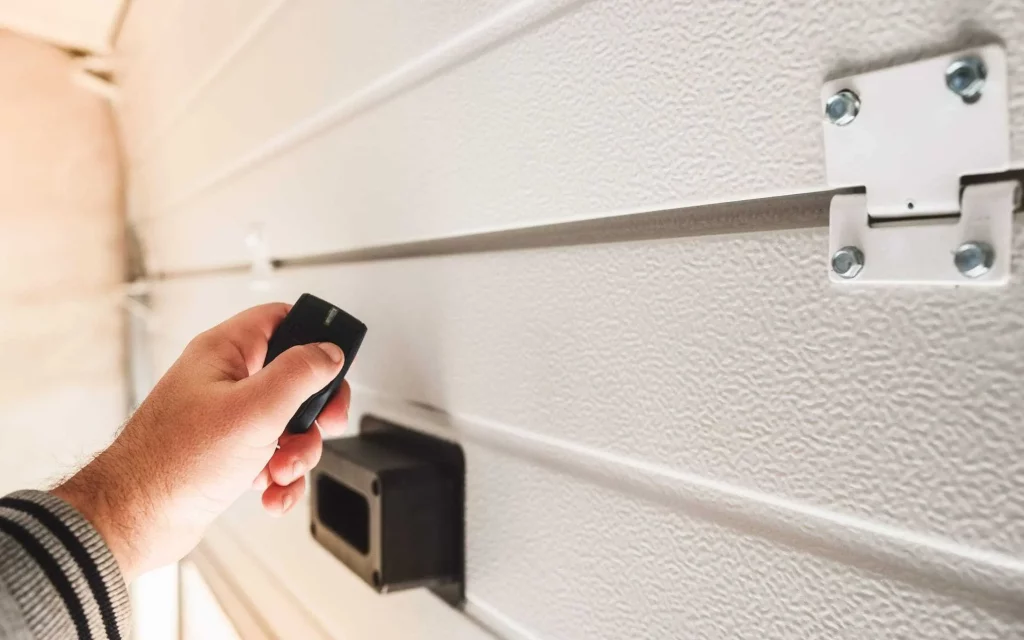Dealing with a garage door that refuses to close despite your remote’s command? Discover the reasons behind “Why My Garage Door Won’t Close With Remote” and explore effective solutions to restore smooth and reliable operation.

Why My Garage Door Won’t Close With Remote: Investigating the Causes
When your garage door defies the convenience of remote control, it can be a source of frustration and inconvenience. Let’s delve into the potential reasons behind “Why My Garage Door Won’t Close With Remote.”
Diagnosing the Dilemma: Why My Garage Door Won’t Close With Remote
This section will break down the common issues contributing to the problem of a garage door refusing to close with the remote. By understanding these issues, homeowners can take informed steps to troubleshoot and rectify the situation.
**1. Safety Sensor Misalignment:
Garage doors are equipped with safety sensors that prevent closure if an obstruction is detected in the door’s path. Misaligned sensors can disrupt the communication between the remote and the door, leading to a failure in closing.
Solution: Inspect the alignment of the safety sensors. Ensure they are facing each other without any obstructions. Adjust the sensors if necessary and keep them clean for optimal functionality.
**2. Weak or Dead Batteries:
The remote’s batteries are the powerhouse behind its signal transmission. Weak or dead batteries can hinder the remote’s ability to command the garage door to close.
Solution: Replace the batteries in the remote with fresh ones. Regularly check and replace batteries to maintain a reliable connection.
**3. Signal Interference:
External factors such as radio frequency interference or conflicting signals can disrupt the communication between the remote and the garage door opener, preventing closure.
Solution: Identify potential sources of interference, such as electronic devices, and relocate them away from the garage door opener. Reprogram the remote to establish a clear and strong signal.
**4. Limit Switch Adjustments:
The limit switches on the garage door opener dictate how far the door should move in both the opening and closing directions. Incorrectly adjusted limit switches can prevent the door from closing.
Solution: Consult the garage door opener’s manual and adjust the limit switches according to the manufacturer’s guidelines to ensure proper door closure.
**5. Obstruction in the Door’s Path:
An obstruction in the door’s path can trigger the safety feature, preventing closure. This feature is designed to avoid accidents or damage caused by closing on an object.
Solution: Inspect the door’s path for any obstructions, such as debris or objects. Remove any impediments to allow the door to close without resistance.
Additional Tips for Troubleshooting:
In addition to the specific issues mentioned, consider these general tips for troubleshooting a garage door that won’t close with a remote:
- Reprogram the Remote: Follow the manufacturer’s instructions to reprogram the garage door remote. This can refresh the connection between the remote and the opener.
- Inspect Wiring Connections: Check for loose or damaged wiring connections in the garage door opener system. Secure any loose connections and replace damaged wires.
- Consult the Owner’s Manual: The garage door opener’s owner’s manual is a valuable resource for troubleshooting and resolving common issues. Refer to the manual for guidance.
Conclusion: Restoring Seamless Garage Door Operations
In conclusion, when faced with the dilemma of “Why My Garage Door Won’t Close With Remote,” understanding the underlying causes is essential for effective troubleshooting. By addressing issues such as sensor misalignment, weak batteries, signal interference, limit switch adjustments, and obstructions, homeowners can restore seamless and reliable garage door operations.
Regular maintenance, including sensor checks, battery replacements, and keeping the door’s path clear, contributes to the overall health of the garage door system. If challenges persist or seem beyond your expertise, seeking professional assistance is recommended to ensure a comprehensive and lasting solution.



Leave a Reply